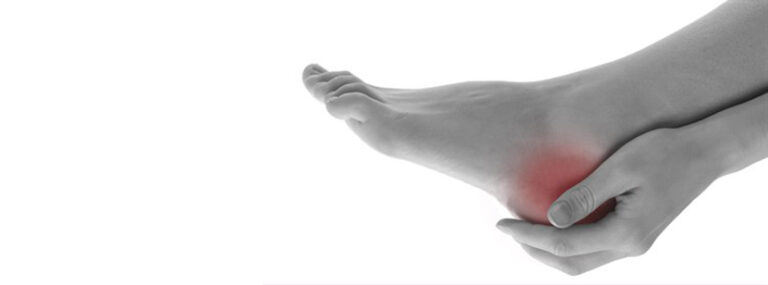The Achilles tendon is the thickest tendon in the human body and attaches three muscles to the heel (calcaneus).
These muscles are the plantaris, gastrocnemius, and soleus muscles, all of which are involved in plantar flexion of the foot.
Some intrinsic risk factors for Achilles tendinopathy include, but are not limited to, flat (over-pronated) feet, decreased ankle joint mobility and range, leg length discrepancy, decreased muscle strength and flexibility. Extrinsic risk factors can include a recent change in training load, footwear, or change in environment.
Achilles tendinopathy can be either acute or chronic, but evidence has shown that it can be managed with the proper treatment by a Physiotherapist.
Where does Achilles Tendinopathy occur?
There are two common sites of injury for Achilles tendinopathy. These are insertional and mid-portion.
- Insertional tendinopathy occurs where the Achilles tendon inserts into the calcaneus. This site is less common and often found in the older, less athletic, overweight or older, athletic population.
- Mid-portion tendinopathy is the more common site for tendinopathy and occurs between the ‘mid-portion’ of the musculotendinous junction and the area of insertion.
Signs and Symptoms of Achilles Tendinopathy:
- Pain at either the insertional point or mid-Achilles region. Depending on the severity and duration of the condition this can be either during activity, before and/or after activity, or even at rest.
- Stiffness, particularly morning or night
- Tender and warm to touch, swollen if there is inflammation in the initial stages
How can a Physiotherapist help?
Tendinopathy’s are a vicious cycle, and with the proper treatment, it can be stopped in its tracks. Initial conservative management is directed towards relieving symptoms. This includes addressing any extrinsic factors which are associated with the injury, resting or modifying activity, stretching, and use of nonsteroidal anti-inflammatories (NSAIDs) and ice.
Following the initial resting phase, your Physiotherapist will provide specific exercises to strengthen and load the tendon in order to promote healing. While the rehabilitation for Achilles tendinopathy is a long process, the prognosis is generally good, and if addressed early can provide favorable results.
Below is an example of an exercise that a physiotherapist may give you:

If you are worried about having this condition, a questionnaire devised by the Victorian Institute of Sports Assessment has been showed to be a valid and reliable source for assessing severity Achilles tendinopathy. However, this questionnaire cannot be used for diagnostic purposes and it is best to seek the advice of your Physiotherapist.
Written by,
Boyd Fleming




